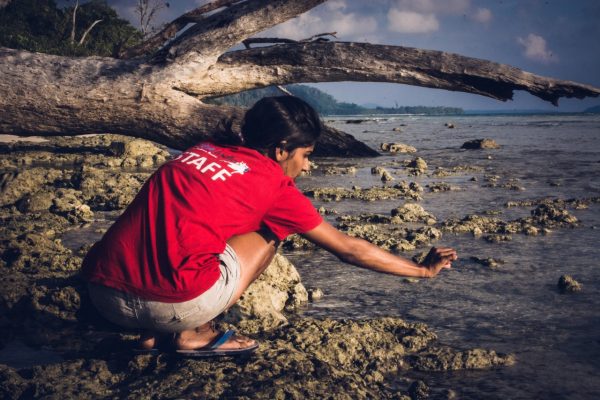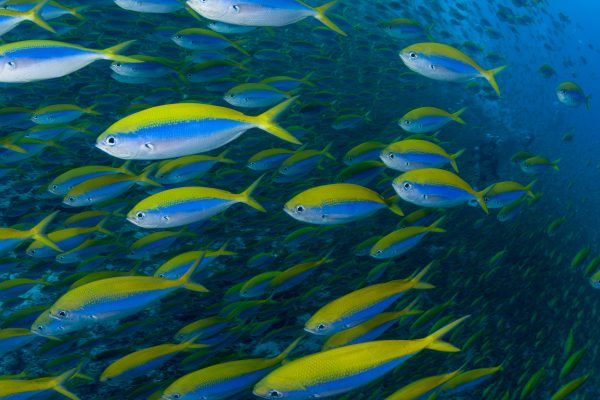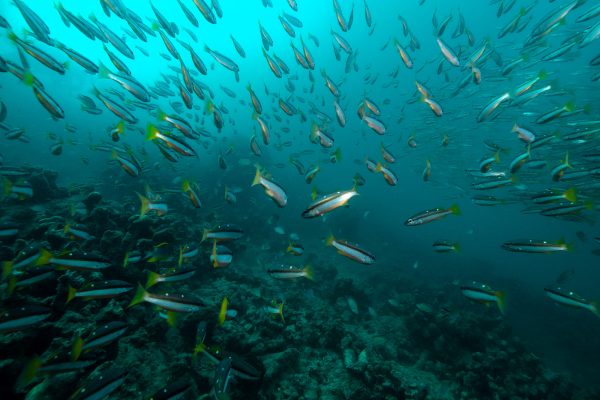It is fairly common among divers that, once the initial excitement of diving wears off, they tend to focus only on “highlight species”, be it Big Stuff or macro, and miss out on the amazing diversity that exists in front of them on virtually every dive.
Most people don’t realize this, but on any single dive, you can see more species of life than you would if you spent a week in one of the top wildlife reserves of the world. Nature enthusiasts – be it safari-goers or birders – know that you appreciate a lot more about wildlife once you are able to understand what you are seeing and what to look for: behaviour, diversity, ecology. All of these transform a passive viewing experience into one of discovery, where gems on insight can be found anywhere and at any time.
One of the most common feedback items we have gotten from our divers is a desire to learn more about marine life than just names and signs of the top 10 most popular fish. And while there are training programs out there, these tend to be fairly general and not in-depth enough.
The current reality in which we live in today is that the oceans ARE in peril. No longer can we pretend that threats to the oceans do not exist and neither can we pretend that we are not part of the problem. On the contrary, not only are we deeply responsible for the deteriorating state of the ocean, we are also a part of the solution for its recovery. As divers we have the unique ability to experience the ocean in all its splendour but also see the devastating impacts of human action unfold in front of our eyes. How can we leverage our strengths as a dive community to bring about change?
This dive program has been designed and refined over the course of 4 years by our in-house marine biologist, Chetana Purushotham. Chetana currently heads DIVEIndia Conservation, a long-term project targeted towards building awareness about the ocean through diver education, alongside running long term monitoring programs to put the Andamans on the global marine research map, and pushing for more actionable conservation on the ground. Chetana has a Masters degree in Wildlife Biology and Conservation and has been working in the field for over a decade. After spending 7 years in the Andamans, diving and interacting with people, she is convinced that diving can be a powerful way to reconnect people with nature and inculcate the importance of conservation in our daily lives- simply by getting more people captivated by the wonders of the ocean.
Program Highlights
The objective of the program is to teach you more about the incredible underwater world – how it works, what the various inter-dependencies are, how to identify various fish and critter families and how to critically evaluate a reef ecosystem. In short – to take you from being a passive spectator to a trained observer and eventually a more aware diver, and you can apply this anywhere in the world you go diving.
At the end of it, you will become more aware of the amazing variety that lurks around every rock and sand patch, and will hopefully learn to appreciate all the wonders of the reef – and not just the sharks or mantas.
The program covers the following topics:
- Introduction to marine ecosystems (yes, there is more than one!)
- Identification of fish & macro life
- Behaviour and interactions in coral reefs and other underwater habitats
- Reef health assessment
- Global coral reef conservation issues
- Divers as ocean ambassadors
This is a two-day fieldwork-intensive program, and will consist of 4 dives, including a night dive. Crucial parts of this program are the discussion sessions and briefings, which provide an overarching framework in which to learn all the skills and concepts mentioned above.
Structure:
The program can be structured in several ways:
Option 1: A stand-alone program, which takes 2 days – on one day, you do 2 day dives. On another day, you do an afternoon dive followed by a night dive
Option 2: A bolt-on program which can be added on to any existing dive package for certified divers (ie, so excludes the Learn to Dive program). Here, 2 of the day dives and the night dive in your package would be applied towards this program, and you would do an afternoon dive extra. So you pay extra only for the instructor time and the 1 additional dive.
Option 3: A bolt-on program which can be added on to the Learn to Dive package – here, the 2 additional dives included in the package would apply towards this program, and you would add a day dive and a night dive to your package. So you pay extra for the instructor time and the night dive + afternoon dive.








